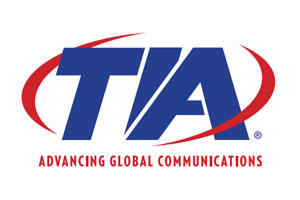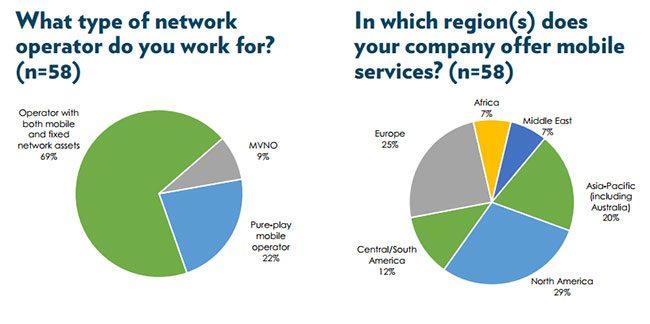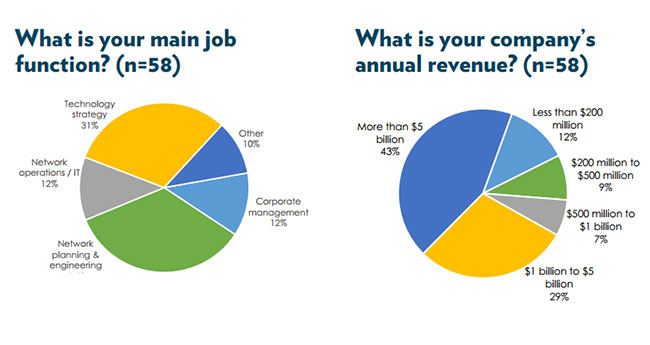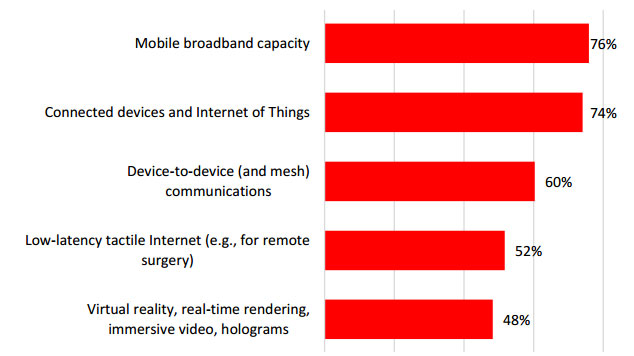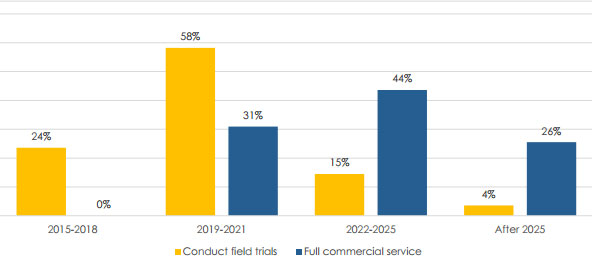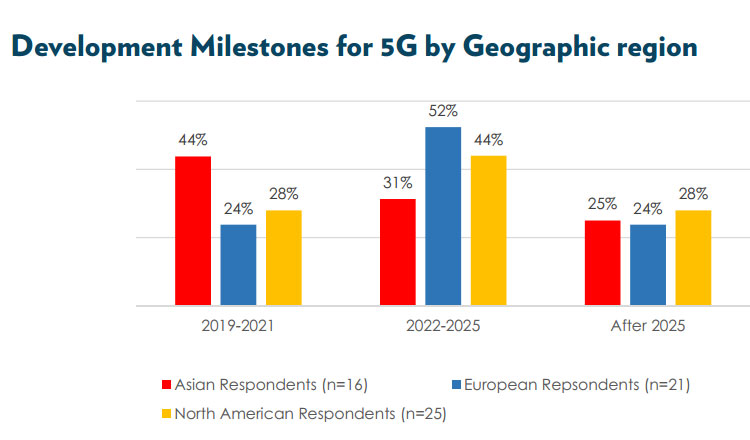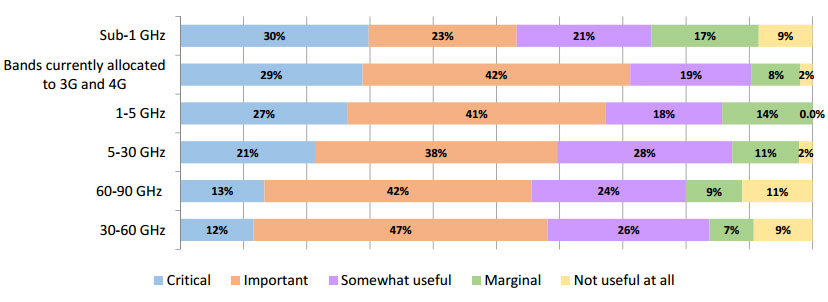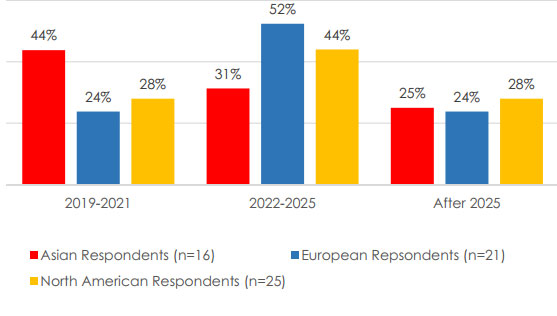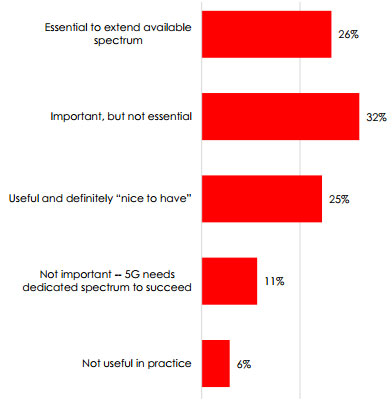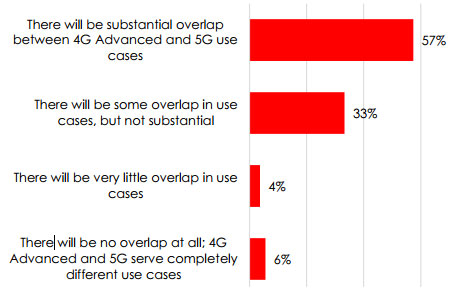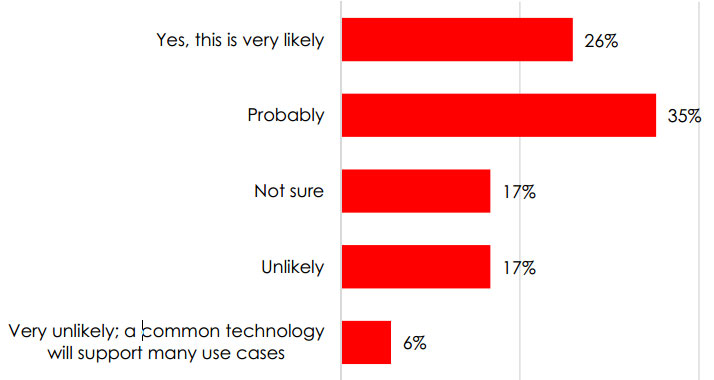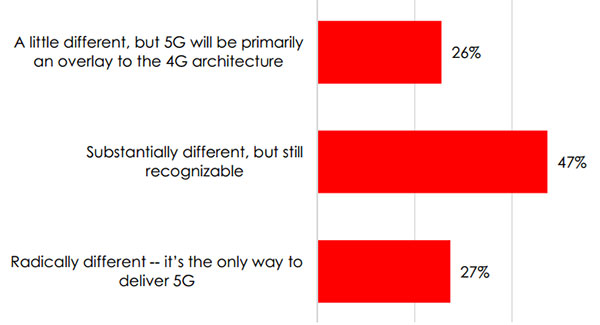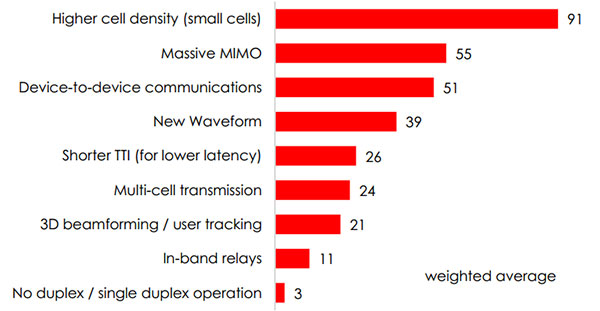5G Operator Survey Executive Summary
5G will impact everything – every industry, every service provider, and every person on the planet. It promises to
extend the global success of 4G-LTE to underpin new use-cases, such as the “industrial Internet” and extreme mobile broadband.
However, to bring a new generation of wireless technology to the mainstream is a colossal undertaking that requires
R&D collaboration, spectrum, and a business case. This white paper presents the findings of an online survey of
mobile opera-tors’ expectations for future 5G networks and services. The intention is to provide guidance to the industry and other stakeholders on spectrum, technology, timelines, and potential 5G services
The survey was carried out by Heavy Reading over the winter of 2015 in partner-ship with the Telecommunications Industry Association (TIA).The data is presented and analysed in detail in Sections II and III of this paper.
Among the key findings from the survey:
The operator community expects Asia, with a survey response of 71%, to lead development and deployment of 5G, ahead of North America at 52% and Europe at 45%. This is consistent with news flow and operator commentary from Japan and Korea. In Japan, the country’s leading operator, DoCoMo, says it will launch a first release of 5G at the 2020 Summer Olympics in Tokyo, and in Korea, leading operators, such as SK Telecom, plan to demonstrate prototype 5G systems at the 2018 Winter Olympics. The response by geography is also interesting. North American operators, for example, are very much more likely to think that North America will lead (73% think this), whereas European and Asian respondents both think Asia will lead.
The primary drivers for 5G, according to the survey, are better broadband perfor-mance (76%) and the Internet of Things (74%). The more specific use-cases (tactile internet, virtual reality, etc.) scored respectably, but ranked lower overall. Use-case development remains a significant issue for the industry as it seeks to develop performance requirements and the business case for 5G.
A third of respondents expect their company to launch commercial service before 2021. However the majority do not expect full commercial service until after 2022 and will focus on development work and field trials until that point. The early launches align well with the Japanese and Korean timeframes discussed above (2020). However, these planned launches may not ultimately constitute “full commercial service.” Of course, much depends on how an operator describes a “full commercial service” in terms of scale and availability in their market.
Operators strongly expect that 5G will incorporate two, or more, radio interfaces — perhaps to support different frequency bands or use-cases — given that a combined 66% selected this option. A full 54% thought that 5G would include “multiple radios (i.e., more than two).” This expectation of multiple Radio Access Technology Systems (RATS) does not necessarily contradict a view held by some that there is a need for a new 5G radio that should be scalable across multiple modes of operations across different bands. One key issue for such a radio is how scalable, across the diverse performance and spectrum requirements, is optimal? This remains an open question as some industry participants may begin to develop and present potential candidates for standardisation.
Operators expect 5G to use multiple low-band and high-band frequencies. The survey shows that operators tend to lean towards low-band spectrum as more critical than high-band spectrum for 5G launches. The sub 5 GHz bands were ranked as “critical” by around 30% of respondents compared to 21% for 5-30 GHz and 13% for millimeter wave. This suggests that early deployments will favor the low bands. Operators naturally want to secure as much spectrum as possible for mobile use, and this may explain why the higher bands are also viewed as “important” by a significant proportion of them.
Asian operators rank the 60-90 GHz band as more “critical” (36%) to 5G than either North
American (10%) or European (7%) operators. This may indicate a stronger appetite for the use of millimeter wave technologies in these markets. By contrast, 50% of European respondents rank 1-5GHz as “critical,” ahead of Asia at 29% and North America at 18%.
Operators are somewhat more positive than negative towards authorised shared access
spectrum, with 26% saying it is “essential” to 5G and 32% saying it is “important.” The 25% saying it would be “nice to have” represent a middle ground, and the remaining 17% are negative. This level of support for shared spectrum is not surprising when viewed as additive to unique-use, licensed spectrum. We do not think, however, that the survey supports a view that opera-tors would want to run 5G only in shared spectrum. However, we note mobile operators are increasingly seeking to use shared spectrum (for example 5GHz and 3.5 GHz) and it appears likely that this model will be used more extensively over time for supplementary capacity.
Operators expect more overlap between 4G and 5G services than between 4G and 5G technology.
A majority of operators (59%) expect substantial overlap between 4G Advanced and 5G use-cases and only a small minority (a combined 10%) think there will be “very little” or “no overlap.” However, while a good number (39%) think there will be “substantial overlap in technology”; more (44%) think there will be “some overlap, but not substantial.”
About a quarter of respondents (26%) think it is “very likely” that incompatible 5G systems
will emerge for different use cases. Given the diverse requirements proposed for 5G, and given that most respondents expect 5G to incorporate multiple air interfaces, this should not be a surprise. On the other hand, there is strong desire among some in the industry to develop a scalable interface that will meet the requirements of as many use-cases as is possible in as many markets as possible. The combined 23% of survey respondents that think it is “unlikely” or “very unlikely” there will be incompatible radio interfaces, but the majority are uncer-tain.
Forty-seven percent of mobile operators expect 5G to have a “substantially different” system
architecture than the traditional cellular network; an additional 27% believes “a radically
different” system architecture is the only way to deliver 5G. This supports the widely-held view that 5G will be a major transformation that may go beyond the Radio Access Network (RAN) to incorporate many other technologies. For example, the use of Software Defined Networks (SDN) and Network Functions Virtualisation (NFV) is driving new networking models; many expect that 5G will “natively” make use of these software-centric networking concepts.
Asked to rank different technologies, operators are clear that 5G system perfor-mance will
primarily be driven by higher density networks built using small cells, far ahead of Massive
MIMO(Multiple-Input and Multiple Output) in second place. Massive MIMO may imply the use higher band spectrum with wider channel widths, but it can be applied in lower-band scenarios as well. Device-to-device, in third place, raises the question of proximity services being more important in 5G and of greater use of ad hoc and mesh networks. This could potentially be useful, for example, in vehicle-to-vehicle, public safety, and general consumer applica-tions. Desire for a new waveform, in fourth place, could speak to the need for low-power IoT capabilities, and for long-range coverage services deployed in the lower bands.
5G Operator Survey
This section will present the demographics and questions related to the 5G timeline, use-cases, and commercial leadership.
Survey Methodology & Demographics
The online survey was carried out by Heavy Reading over the winter of 2015. The questionnaire was developed in partnership with Telecommunications Industry Association (TIA) and contained 25 questions, including five qualifying demo-graphic questions. The survey generated a total of 58 responses from individuals working for operators with mobile properties, once non-operator and other spurious responses were removed. These 58 respondents were typically in technology strategy roles in larger operators. Geographically, they are reasonably well distributed across the major global regions. The demographics are shown in the figure below.
Which region(s) do you think will lead in the development and deployment of 5G? (Choose all that apply) 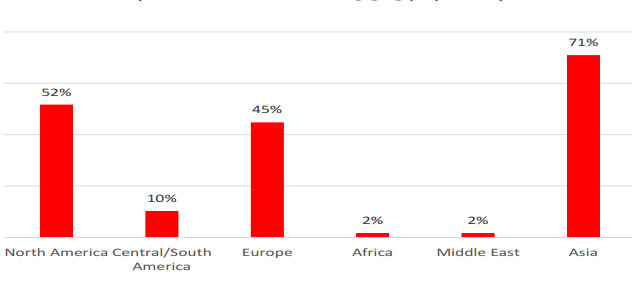
The operator community clearly expects Asia to play a leading role in the development and deployment of 5G, with 71% of respondents selecting this option, ahead of North America at 52% and Europe at 45%. This is broadly consistent with the level of news flow and operator commentary from Japan and Korea, alhough technical developments remain to be seen.
In Japan, the country’s leading operator, DoCoMo, says it will launch a first release of 5G at the 2020 Summer Olympics in Tokyo, and in Korea, leading operators, such as SK Telecom, plan to demonstrate prototype 5G systems at the 2018 Winter Olympics. There has not been as much discussion of launch timelines in the public commentary of European or American operators.
However, this was a “choose all that apply” question to reflect the fact that 5G is a global development and that multiple regions could feasibly deploy at around the same time. In this context, note that both North America and Europe also scored highly with 52% and 45% respectively. This is significant because a broad-based adoption of 5G, without too many regionally-defined features, is important to driving global scale.
The response by geography is interesting. North Americans, for example, are very much more likely to think that North America will lead (73% think this). Europeans and Asians, meanwhile, think Asia will lead. This is shown in the chart below:
Which region will lead 5G deployment? (Response by geography)

Which use cases will be the most important drivers for 5G? (choose all that apply) (n=58)
The two primary drivers for 5G, according to the survey, will be better broadband performance (76%) and the Internet of Things at (74%). The more specific use-cases (tactile internet, virtual reality, etc.) scored respectably. However, perhaps because they offer a specific, and therefore smaller, overall opportunity, they ranked lower overall. Use-cases development remains an open question for the industry as it seeks to develop performance requirements and the business case for the technology.
When do you think your company will reach the following development milestones for 5G? (n=57)
The response to this question is interesting in several ways. Almost a third of respondents expect their company to launch commercial service before 2021. However the majority do not expect full commercial service until after 2022, and will focus on development work and field trials until that point. The early launches seemingly align well with the Japanese and Korean timeframes discussed above (2020). However, these planned launches may not ultimately constitute “full commercial service,” as what constitutes “full commercial service” has yet to be defined.
The chart below breaks out the response from three main global regions and shows that Asian operators, with 44%, are significantly more likely to expect commercial launch in 2019-2021 timeframe than either European (28%) or North American (24%) respondents. This is consistent with the findings on 5G leadership discussed above.
Development Milestones for 5G by Geographic region
The full table of results from this question is below:
Although not directly captured by the survey, we can also make some other general inferences
regarding the 5G timeline:
- 2020 may be ambitious for commercial launch and we would expect that capability will be limited
at that time; however - Not all 5G requirements will be delivered at launch. The initial platform will likely evolve over time
to meet more demanding applications – just as with 4G - 5G should be designed to meet application requirements in 2025 when, according to the survey, it
will likely be a mainstream proposition. - Trying to identify requirements 10 years ahead of schedule is very difficult. This may make the
adoption of “lean” radio design, future capability, more important.
5G Spectrum & Technology
This section addresses technology, radio access, and spectrum-related questions.
What do you think the 5G radio interface will be?
This is an important, but difficult, question. The radio interface is not the only thing that will define 5G, but it will be highly influential on the resultant architecture. However, with some industry participants currently gathering and generating 5G performance requirements – such as described in the Next Generation Mobile Networks Initiative’s (NGMN) White paper – and with standardisation only in the very early stages, it is too soon to have a clear idea of what the 5G radio inter-face(s) will be. This question therefore aims to get a sense of how operators are thinking about this question in the run-up to the start of standardisation in 2016.
In this context, the 28% of respondents that selected “too early to say” are clearly not wrong. According to the survey data, however, there is strong expectation that 5G will incorporate two, or more, radio interfaces – perhaps to support different frequency bands or use-cases – given that a combined 66% percent selected this option, of which 54% thought that 5G would include “multiple radios” (i.e., more than two) and 12% at least two radios for higher and lower bands.
This data is clearly saying operators do not currently expect a single scalable interface to be the only radio used in 5G. This is logical given the diverse and potentially “extreme” requirements for the 5G air interface (extreme capacity, ultra-low latency, ultra-reliable, and ultra-scalable from an IoT perspective). Moreover, there is some industry discussion around the idea that other RATS, such as Wi-Fi and LTE could be combined with a new 5G air interface.
This expectation of multiple RATS does not contradict a view that there is a need for a new 5G radio and that it should be scalable across multiple modes of operations across different bands. The key issue is how scalable across the diverse performance and spectrum requirements is optimal? This is an open question as industry participants develop and present candidates for 5G standardisation from 2016 onwards.
Do you expect a new waveform to be part of the first 5G standards release? (n=58)
The uncertainty about the type of 5G radio(s) that will be standardised in the first release (discussed previously) is underlined by the very varied response to this question. The survey suggests that a plurality of operators (36%) think that 5G will probably involve a new waveform of some kind, but many (35%) are still uncertain. It is fairly clear that most operators believe 5G won’t only be an evolution of Orthogonal Frequency Division Multiplexing (OFDM) (e.g., with a new numerology), but the survey does not discount that this might be part of a 5G air interface.
Please rate the importance of the follow your company’s markets. (n=43-52)
Spectrum is the life-blood of radio access networks. The availability of, ideally, harmonised frequencies is necessary for the launch of a new RAN technology. The number of LTE bands now in use is very diverse and operators have relied on improvements in Radio Frequency (RF) component technology to source multi-band handsets and other RF equipment. This trend looks set to continue in 5G, where it is expected that even more bands will used, from very
low-band to very high-band.
The survey shows that operators think low-band spectrum will be more critical than high-band spectrum for 5G. The sub 5 GHz bands were ranked as “critical” by around 30% of respondents compared to 21% for 5-30 GHz and 13% for millimeter wave. This suggests that early deployments will tend to favor the low bands.
Within the low bands (sub 5 GHZ in the chart above) there are some nuances to consider. Sub 1 GHz is clearly very desirable, if available (30% critical). However, the fact that only a relatively low 23% view it as “very important” may indicate that it is perhaps not viewed as generically important and might be focused on the low-power IoT use-case, identified earlier as a driver for 5G.
It is logical that bands allocated to 3G and 4G would be ranked highly because this is spectrum already allocated to mobile use and already in operators’ possession – so the opportunity here may be to re-use it for 5G in much the same way 2G and 3G spectrum has be refarmed for 4G.
More generically the 1-5GHz bands were ranked as critical (27%) or important (41%) by respondents. This aligns well with a view that 5G will be deployed in new, low band spectrum initially. Candidates here might include 2.3 GHz, 3.5 GHz and 4 GHz bands.
Operators naturally want to secure as much spectrum as possible for mobile use, and this may explain why the higher bands are also viewed as important. This is especially the case for the very high throughput services where very wide band allocations will be needed — hence the interest in centimeter wave and millimeter wave.
Importance of Spectrum Bands by Geographic Region
The chart above shows that Asian operators rank the 60-90 GHz band as more “critical” at 36% than either North Americans (10%) or Europeans (7%). This perhaps indicates a stronger appetite for the use of millimeter wave technologies for 5G in these markets. By contrast, 50% of European respondents rank 1-5GHz as critical ahead of Asia at 29% and North America at 18%.
How likely is it that some of the currently used V-Band spectrum (57-66 GHz) and E-Band spectrum (71-86GHz) will be allocated to 5G within your company’s operating region(s)? (n=52)
This question asked if V Band and E Band spectrum was likely to be allocated to 5G mobile access in the respondent’s region. These bands are potentially im-portant to operator’s ability to offer very high throughput services and the use of millimeter wave has extensive implications for radio interface and handset design. Fewer respondents thought it very likely that E Band would be reallocated than V Band, but in both cases a majority believes it is “somewhat likely” rather than “very likely.”
One natural explanation for this result may be that operators believe V-Band and E-Band will be subject to further study, for example in the WRC-19 process, before they are allocated to mobile use. The WRC-19 process will likely be important for millimeter wave spectrum. The ITU-R is currently preparing for WRC-15 in November 2015 (primarily to discuss sub 6-GHz spectrum) and, at this meeting, would like to introduce an agenda item to allocate high band spectrum at WRC-19. In preparation for WRC-15, the ITU-R is seeking support to add the proposed “above 6 GHz” item to the WRC-19 agenda.
Overall, this response would appear to imply that current users of V-Band and E-band spectrum for point-point connectivity, such as small cell backhaul or home networking, do not need to fear mobile (re)allocation imminently, but should be prepared for it over the longer-term.
How important will authorised shared access spectrum be to 5G in your company’s operating region(s)?
Operators are somewhat more positive towards authorised shared access spectrum than negative, with 26% saying it is “essential” to 5G and 32% saying it is “important.” The 25% saying it would be “nice to have” represent a middle ground, and the remaining 17% are negative.
While most operators traditionally prefer licensed spectrum, in the context of the comment above — i.e., that operators want access to as much spectrum as possible — this support for shared spectrum is not a great surprise if it is viewed as additive to unique-use, licensed spectrum. We do not think this supports a view that operators would want to run 5G only in shared spectrum, but that many of them would take advantage of it, should it be available in
their market, alongside licensed spectrum.
There are now more examples of mobile operators seeking to use shared spec-trum and it appears very likely that this model will be used more extensively over time. For example, the intent to operate LTE in the unlicensed 5GHz band with LTE-U or LTE-AAA, and the recently released 3.5GHz shared access Band 42 in the U.S., provide potential examples for this mode of operation.
It is also notable that Asian respondents are more likely to view shared access spectrum as critical to 5G (40%) than Europeans (28%) or North Americans (13%).
To what extent will 4G Advanced and early 5G systems overlap in terms of use cases?
A majority of operators (59%) expect substantial overlap between 4G Advanced and 5G use-cases and only a small minority (a combined 10%) think there will be “very little” or “no overlap” between the services. One third take an intermediate position. At this stage, we expect that there will be greater overlap at the time 5G is introduced because it will likely not have full capability at launch, and because 4G Advanced will be mature and very capable by then. As time goes on, the overlap would diminish as 5G enables more demanding use-cases that either are not possible on 4G, or don’t perform very well.
To what extent will 4G Advanced and early 5G systems overlap in terms of technology?
Operators think there will be less overlap between 5G and 4G Advanced technology than between use-cases. True, a good number (39%) think there will be “substantial overlap in technology,” however the largest group (44%) think there will be “some overlap, but not substantial.” A combined 16% discount the im-portance of overlap.
This is a difficult response to interpret because a) clearly there is uncertainty; and b) we are not clear how respondents think about overlap – for example, there are many features in 4G Advanced that may likely be part of 5G, but implemented differently. For example, LTE-M for IoT, LTE-Broadcast, LTE Direct, and so on, are capabilities that are being developed for 4G, but may also be “native” to 5G in some form. Does this count as substantial overlap, or something new and different?
Do you expect to see different types of incompatible 5G systems emerge for different use cases (e.g., M2M vs. mobile broadband, or indoor short-range vs. outdoor wide-area)?
About a quarter of respondents (26%) think it is “very likely” that incompatible 5G systems will emerge for different use cases. Given the diverse requirements proposed for 5G, and given that most respondents expect 5G to incorporate multiple air interfaces, this result should not be a surprise.
On the other hand, there is strong desire among some in the industry to develop a scalable interface that will meet the requirements of as many use-cases as is possible. The combined 23% that think it “unlikely” or “very unlikely” there will be multiple radio interfaces represent this view.
The largest group is uncertain, with 35% “probably” and 17% “not sure” to give a combined 52% of respondents who are uncertain. This reflects the fact that 5G requirements are not finalised and the fact that very little specification work has actually begun.
This is also a difficult question from the perspective of how to define a radio interface. It is conceivable that the same basic interface used in different bands could be configured such that it is “incompatible.” The survey data leans towards a view that multiple incompatible systems will emerge, but only by a slight margin. Thus, really, the key question is what is the optimal spread of capabilities?
How different will the 5G system architecture be from the classic cellular network architecture?
Mobile operators expect 5G to have a “substantially different” system architecture to the classic cellular network, according to 47% of respondents, with a further 27% saying they believe “a radically different” system architecture is the only way to deliver 5G. This supports the widely-held view that 5G will likely be major transformation.
The idea of the “no-cell” or “no-edge” network has been proposed for 5G. Characteristic of this architecture are terminals that connect to more than one cell at a time, with signaling- and data-plane, and downlink and uplink, decou-pled to give the end-user consistently excellent performance and coverage. This is also known as the “amorphous cell” or “super cell” and, while aspects are under development in 4G, implementation in 5G would effectively represent a new RAN architecture.
And the differences go deeper than the RAN, to incorporate the entire system architecture. The use of SDN and NFV in communications networks is driving new networking models and it is widely expected that 5G will make use of these software-centric networks “natively.” More radically, there are perhaps other networking technologies, such as Information Centric Networking (ICN), that may be active within the timeframe to be influential on 5G.
We should not discount the 26% who say 5G will only be a little different to the 4G architecture because 5G networks will re-use physical cell sites (towers, indoor systems, etc.) and transport facilities to the extent that, in parts, they may look very much like overlays. This is especially likely to be the case for lower-band deploy-ments.
Which three factors will have the biggest impact on 5G system performance? (1=the biggest factor, 2=the second-biggest factor, 3=the third-biggest factor)
There are many components and subsystems that will likely make up 5G. This question asks about a subset of radio-related technologies that have been proposed as likely to be useful in 5G. It is not intended to be an inclusive or complete list. Respondents were asked to rank their top three choices from the list and the results are shown using a weighted average calculation in the chart above.
Based on these results, survey respondents believe the primary impact on 5G performance will be higher density networks built using small cells, which domi-nates the response ahead of Massive MIMO in second place. Massive MIMO tends to imply the use higher band spectrum with wider channel widths, but it can be applied in lower-band scenarios as well.
Device-to-device is interesting. It raises the question of proximity services being more important in 5G and of more ad hoc and mesh networks. This could poten-tially be useful, for example,in vehicle-to-vehicle, public safety, and general consumer applications.
A new waveform in fourth place, with a weighted average of 39, could speak to the need for low-power IoT capabilities, and for long-range coverage services deployed in the lower bands. This question of whether a new waveform is needed remains under discussion.

